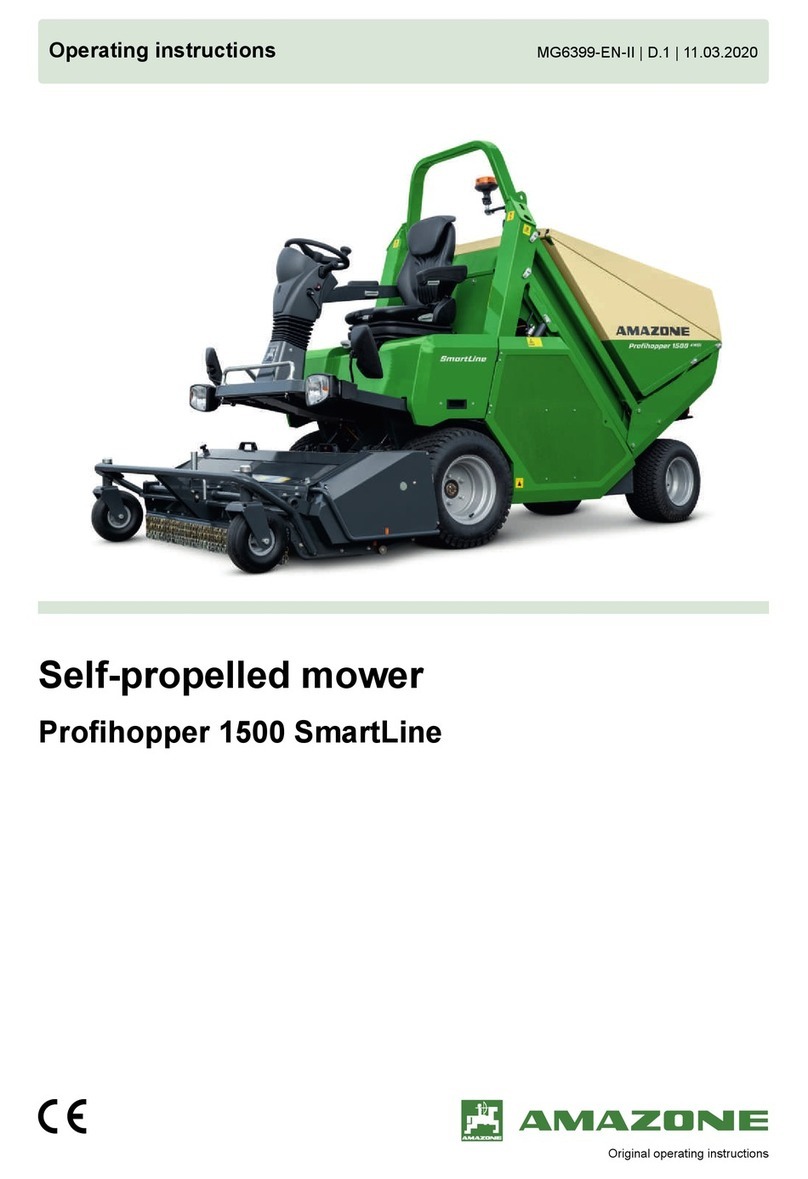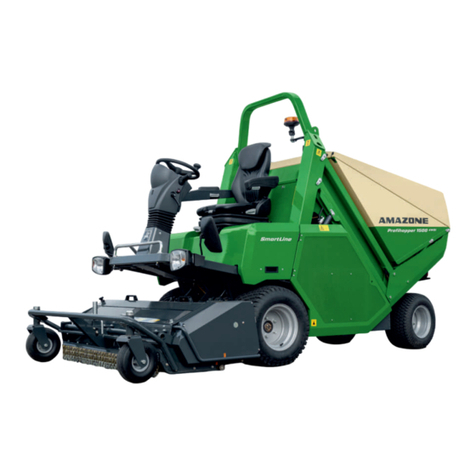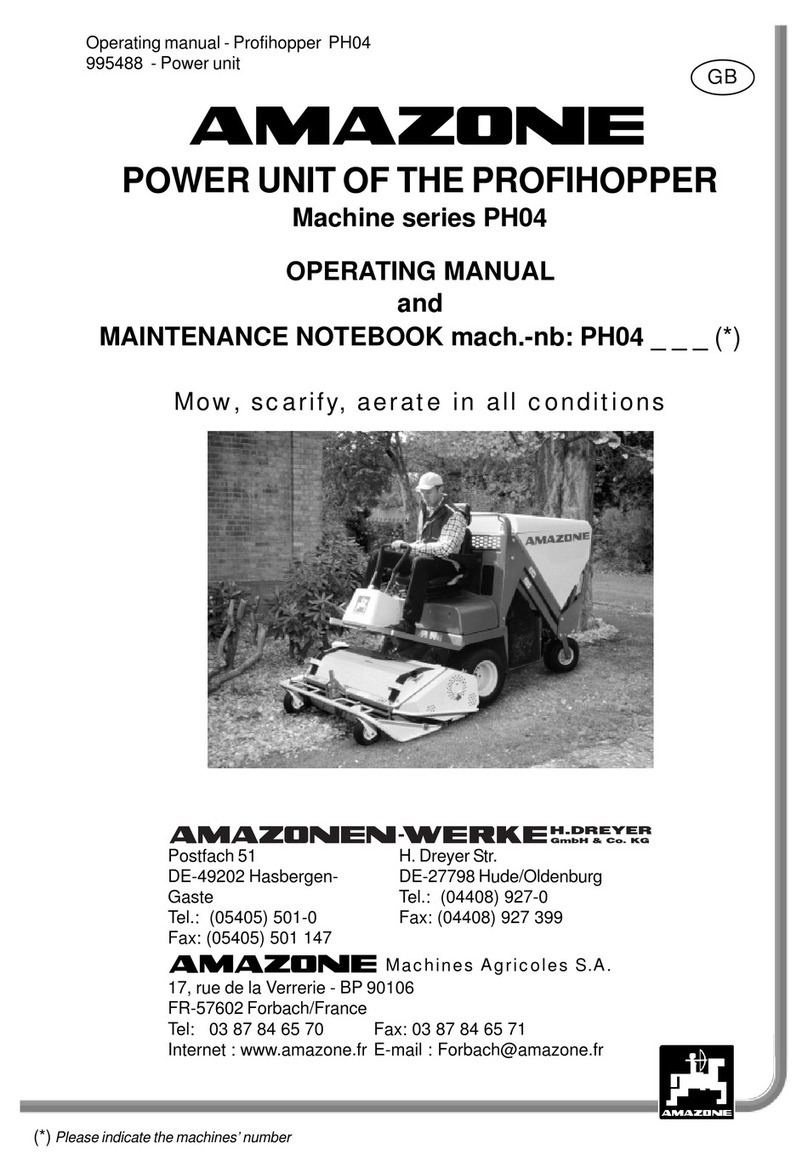
6.8 Checking the hydraulic oil level 71
6.9 Refilling the hydraulic oil 71
6.10 Checking the diesel fuel tank fill level 72
6.11 Refuelling diesel 72
6.12 Checking the tyre inflation pressure 73
6.13 Checking wear on the blades and
blade mounts 73
6.14 Selecting the blades 74
6.15 Changing or replacing the blades 75
6.16 Adjusting the cutting height 76
6.17 Folding up the roll-over protection 77
6.18 Folding down the roll-over protection 78
6.19 Coupling the trailer 80
6.20 Preparing the machine for road
travel 80
7Using the machine 81
7.1 Practical routines 81
7.1.1 Opening and closing the seat carrier 81
7.1.2 Opening the toolbox 82
7.1.3 Closing the toolbox 83
7.1.4 Opening and closing the engine
cover 83
7.1.5 Opening and closing the rotor
protective cover 85
7.1.6 Opening and closing the radiator
cover 88
7.1.7 Opening and closing the electrical
equipment maintenance flap 89
7.1.8 Opening and closing the bottom
maintenance flap 90
7.2 Climbing on and off 91
7.3 Driving 91
7.3.1 Checks before moving off 91
7.3.2 Putting on and taking off the seat
belt 92
7.3.3 Starting the engine 93
7.3.4 Switching off the engine 94
7.3.5 Selecting the direction of travel 95
7.3.6 Accelerating 95
7.3.7 Braking 96
7.3.8 Applying the parking brake 96
7.3.9 Using cruise control 97
7.3.10 Using the rotating beacon 98
7.3.11 Using the lighting for road travel 98
7.3.12 Actuating the horn 99
7.3.13 Using the hazard warning lights 99
7.3.14 Road transport 100
7.4 Mowing 100
7.4.1 Lowering the cutting deck 100
7.4.2 Switching on the cutting deck 100
7.4.3 Switching off the cutting deck 101
7.4.4 Raising the cutting deck 102
7.5 Mulching 102
7.5.1 Installing the mulch flap 102
7.5.2 Removing the mulch flap 103
7.6 Scarifying 104
7.7 Emptying and raising the grass
collector 104
7.7.1 Emptying the grass collector close
to the ground 104
7.7.2 High tip emptying the grass collector 104
7.7.3 Raising the grass collector 105
7.7.4 Lowering the grass collector 106
7.8 Setting the Info display 107
7.8.1 Setting the language 107
7.8.2 Setting the clock 107
7.8.3 Toggling between normal mode and
job mode 108
7.8.4 Resetting the job mode counter 108
7.8.5 Resetting the maintenance interval 109
8Repairing the machine 110
8.1 Lifting the machine 110
8.2 Maintaining the machine 111
8.2.1 Maintenance schedule 111
8.2.2 Checking the engine coolant fill level 112
8.2.3 Cleaning the radiator 113
8.2.4 Checking the diesel pre-filter water
separator 113
8.2.5 Checking the wheel bolt tightening
torques 114
8.2.6 Checking the hydraulic hoses 115
8.2.7 Cleaning the diesel pre-filter water
separator 116
8.2.8 Cleaning the air filter 117
8.2.9 Checking the drive belt 118
MG6399-EN-II | A.1 | 07.05.2019 III
































